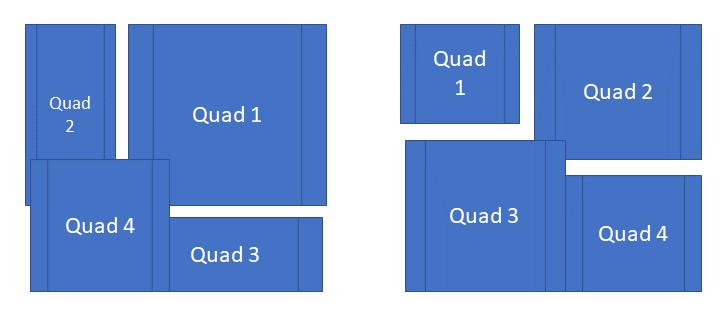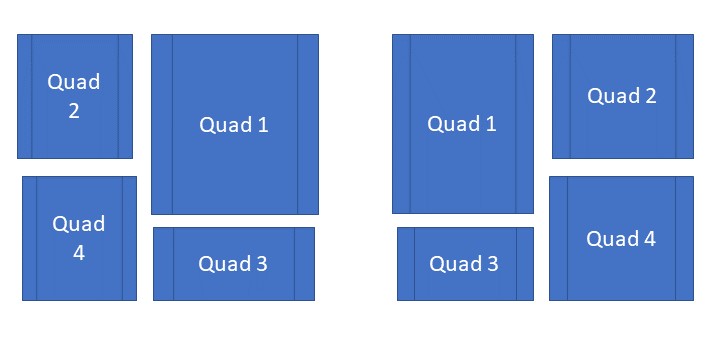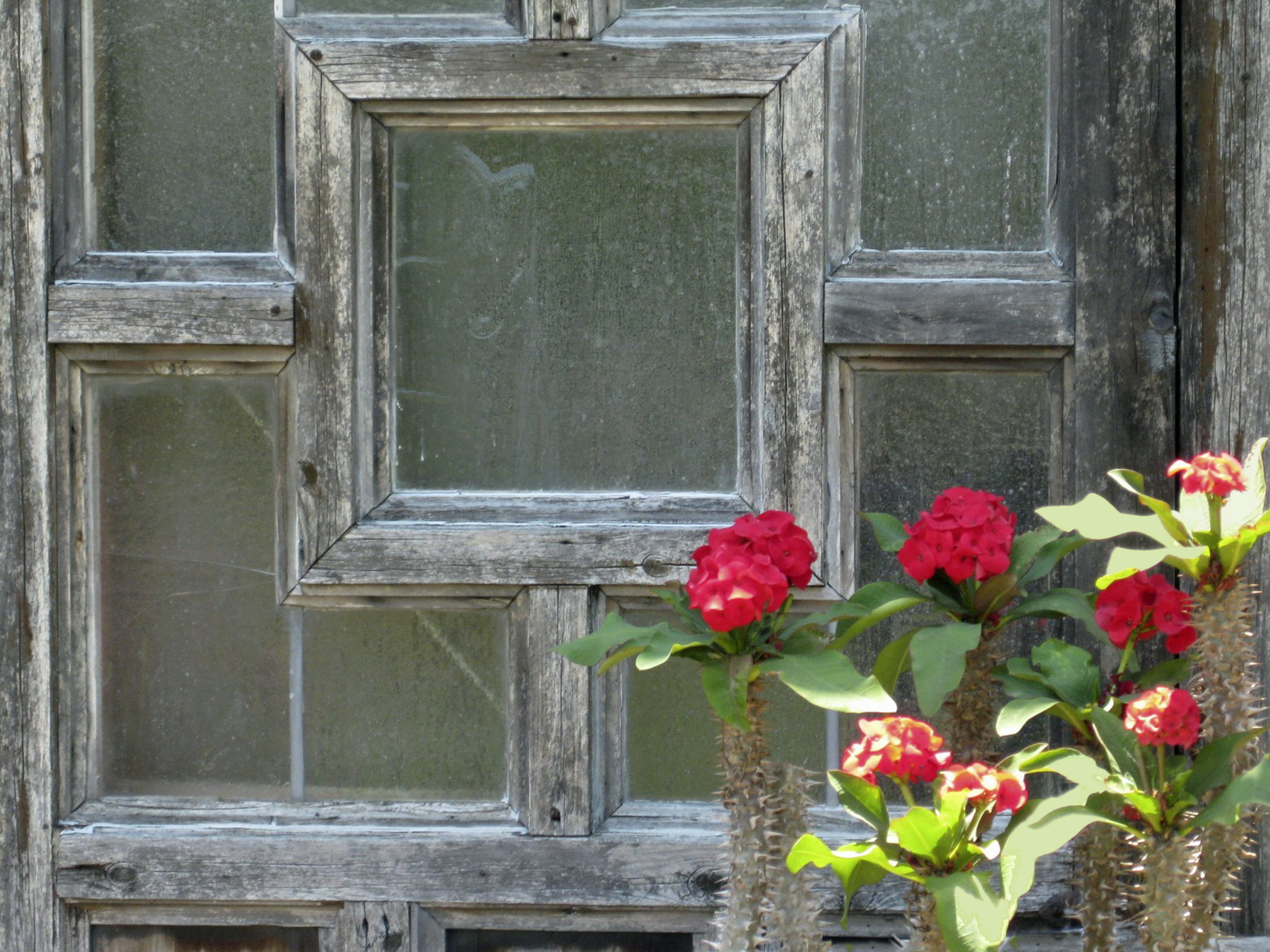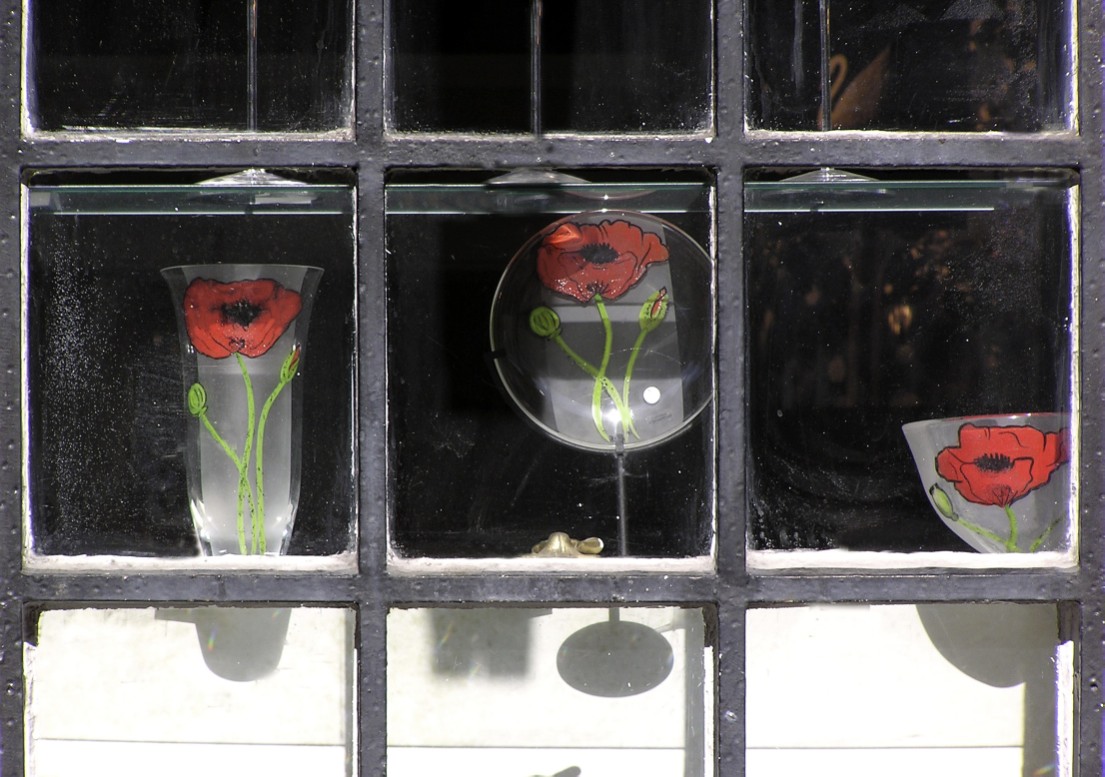
Even greater tension might exist if the two windows were disjointed in opposite directions:
PERSON #1 PERSON #2
This relationship would typify the traditional psychotherapeutic interaction, where Person #1 is doing all the disclosing (in the role of patient-on-the-coach) and Person #2 is doing very little disclosing (in the role of psychotherapist). This therapeutic relationship is filled with tensions and interpersonal projections (a concept I will explore in much greater depth in later chapters) that can be quite constructive if skillfully used by the experienced therapist.
Stabilized Interaction among the Panes
What if one set of panes of the Johari Window could move but not the other set? This would represent a compromise between the strict interdependence of the panes in the Original Johari Window and the relative independence of panes in the Disjointed model. Graphically, the windows of two people in interaction might look something like this:
Relationship A [Before]
PERSON #1 PERSON #2










